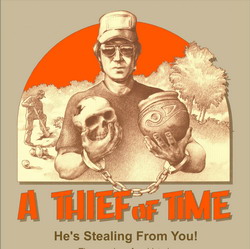The readings for this week’s assignment consisted of articles written by John H. Jameson, Jr. and Fred L McGhee; two experienced archaeologists with valuable insight into working within the public sector. Their views reflect their depth of experience as public archaeologists and contain many valid points.
Jameson stated that his “colleagues are firmly committed to finding engaging and innovative ways to reach out to national and local communities and involve them in the rich diversity of human experience”. If there ever was a place where a rich diversity of human experience exists, it is here on the North American continent. Just the varied and numerous Native American tribes (each unique and different from each other) that once roamed this territory we know today as the United States is a testament to this idea. When people from the community get involved, the items uncovered help curb the romantic imagination and preconceived notions with solid ideas and actual images, therefore increasing public buy in and personal interest in seeing a project to completion.
Jameson also talked about the “development and expansion of educational archaeology in the 1980s and 1990s” and how entities such as private and public universities have “placed a high priority on establishing and promoting effective education and outreach programs”. This trend was captured here in the Rio Grande Valley during the 1990s by a group called Los Caminos Del Rio. Working in conjunction with the Texas Historical commission and supported by the National Trust for Historic Preservation, this group developed and educational program designed to preserve the history of the Rio Grande Valley along both sides of the Rio Grande. Their goal was to encourage preservation through the creation of a bi-national heritage tourism corridor. Approximately 20 years after that, the CHAPS Program was initiated at the University of Texas Rio Grande Valley’s legacy institution the University of Texas Pan American. The goals of the CHAPS Program reflect many that are followed by public archaeologists. The CHAPS mission is to cover the same 200 mile stretch between Laredo to Brownsville as they help to create archaeologically and historically literate citizens who are aware of their local cultural and natural history and of its importance to the future of the Rio Grande Valley.
Both authors talk about Cultural Resource Management (CRM) and their experiences with public interaction with archaeological projects. Jameson feels that “public archaeology has evolved from a definition synonymous with cultural resource management to a broader scope that included educational archaeology, and other issued which bring us closer to our anthropological roots” (154). As the 19th century and early 20th century represents an era of conservation into history preservation, I see a trend into the 21st century of folks who are interested in embracing their “anthropological roots”. As public archaeology branches out from its more privately run CRM mantra, Jameson discussed trends toward a “broader scope that included educational archaeology, public interpretation of archaeology, and a new era of Native American Archaeology” (154). As we watch present-day TV commercials such as those for services such as Ancestry.com and 23 & Me, we see that this idea is motivating people to obtain a clear definition of exactly who they are. This will surely spark a trend of more sympathetic approaches to discovery, interpretation and preservation into presentation, public education and awareness.
McGhee discussed an experience he had with an archaeological project in Houston that pertained to an African American neighborhood called the Fourth Ward and what resulted when the project turned into a public archaeology project. Participatory Action Research (PAR) has three main goals; the most desired (it seems) of which is to achieve social change. The benefits of following this practice is that there are clear “decisional points” in the “research process”. Following these points helps the project achieve results that benefit both the community and the intended research questions.
Our project, the Hidalgo County Paupers Cemetery Project (HCPCP) is designed to develop an understanding of who and/or what type of person is buried in this particular cemetery and why. Our professor, Dr. Sarah Rowe has gone to great lengths to create this project and to lay the foundation via which her students will conduct and gather the data needed for analysis. In accordance with processes that McGhee promotes in his essay, Dr. Rowe has “partnered with communities during the research design and implementation” and will continue during the “analysis phases” as well. She has utilized local officials as advisors and made sure that we are working together for a mutually beneficial outcome.
With regard to McGhee’s experience with the Houston project, there were some old and lingering bad feelings with some of the community members that caused conflict within the project as a whole. This can be viewed as a problem with getting the public involved as “memories of an old injustice can surface and individual agendas of outside activists can derail even the best conceptualized research efforts”. I found it fascinating how toward the end of the Fourth Ward Neighborhood project, McGhee was viewed as an ‘Uncle Tom’ figure when his intentions were always sincere and clear and unfortunately this project only continued to become more difficult to complete. So essentially, getting the public involved in this case turned into a negative. We don’t expect that to be the case with the HCPCP. Our efforts are to record the number of burials in this potter’s field, to identify those buried there, and to uncover who they were, where they were from, and why were they buried in this particular field. Once more community members become involved, we hope to obtain oral history interviews and other primary source documents to help us fill our canvas with the names and faces of those who are resting in peace in the Hidalgo County Paupers Cemetery.
